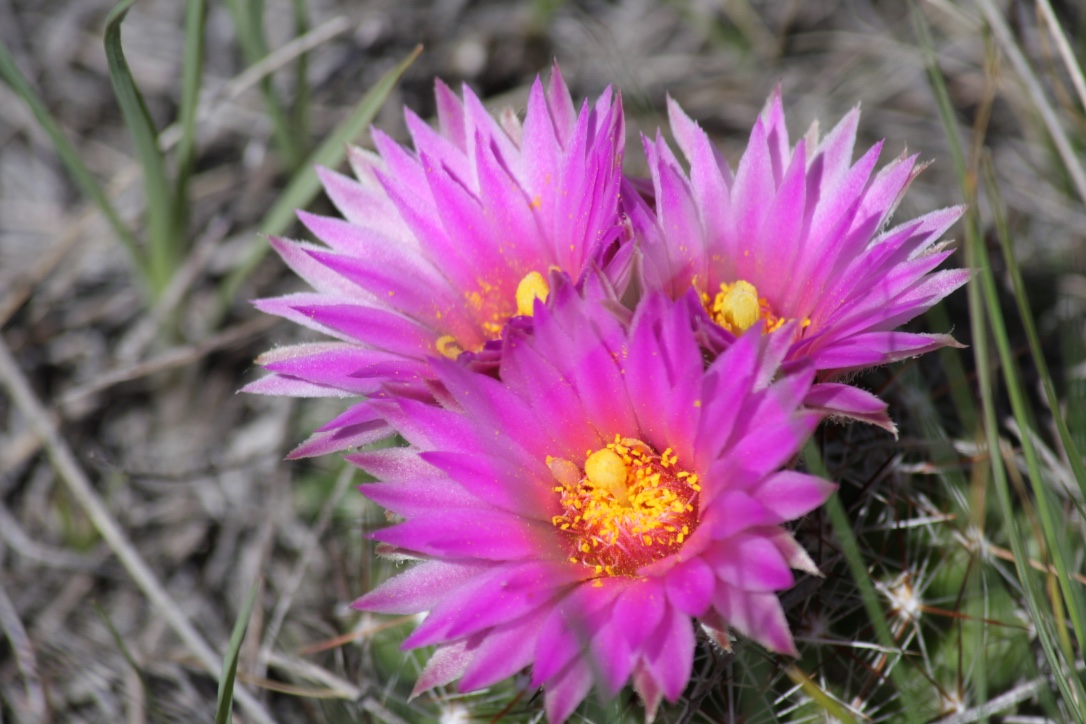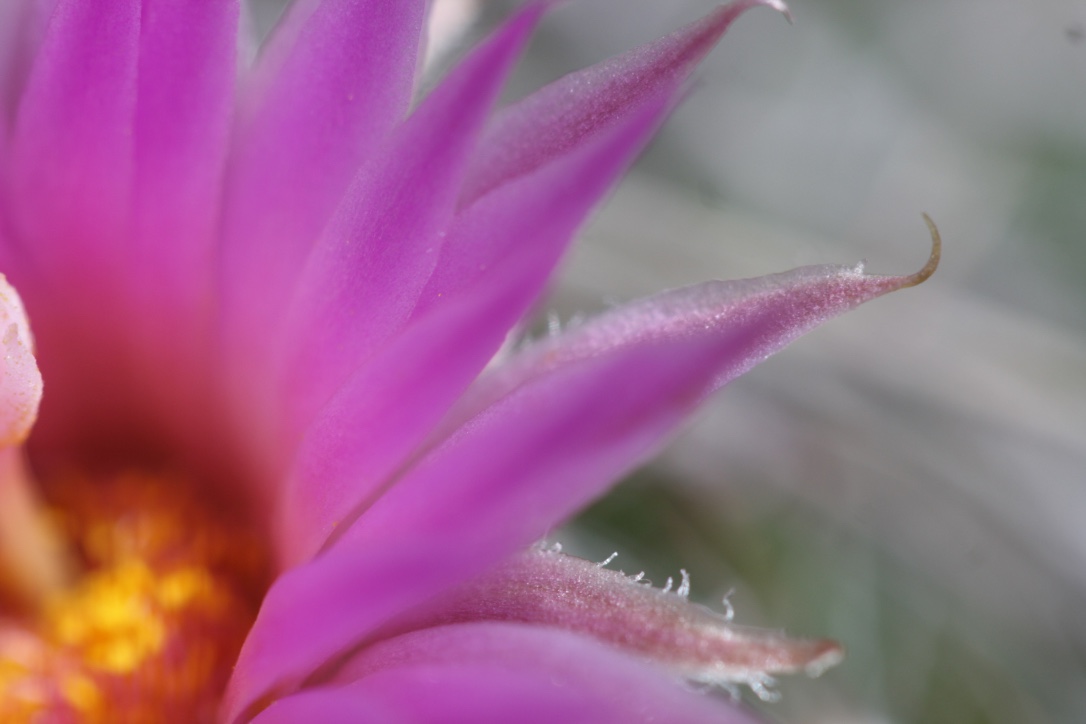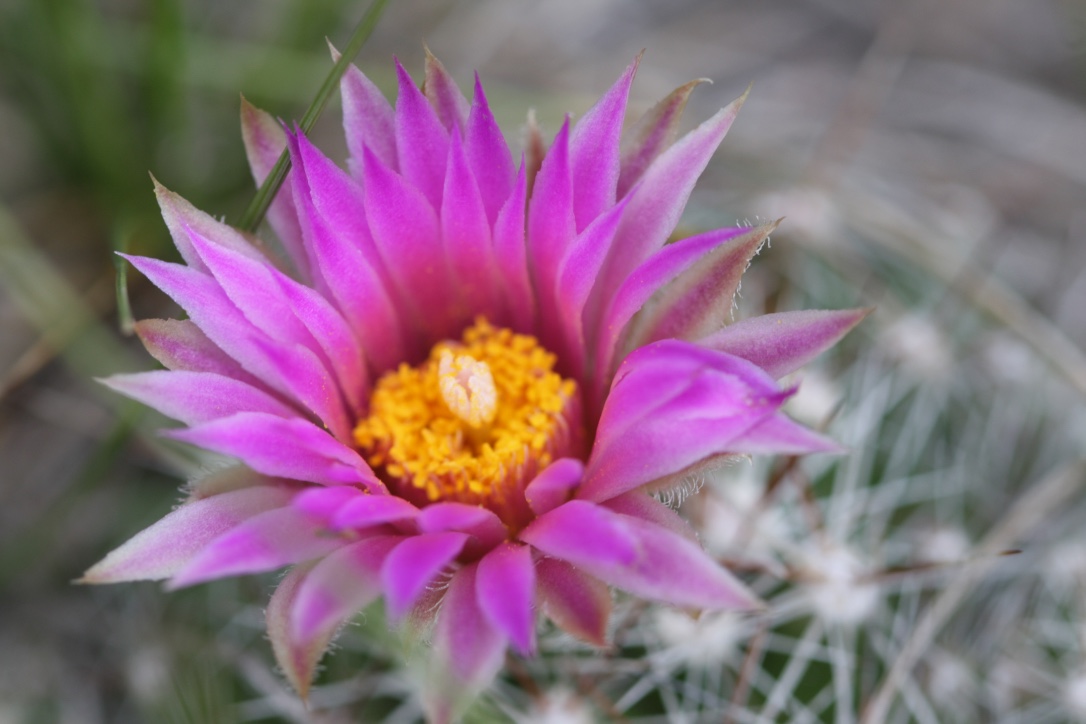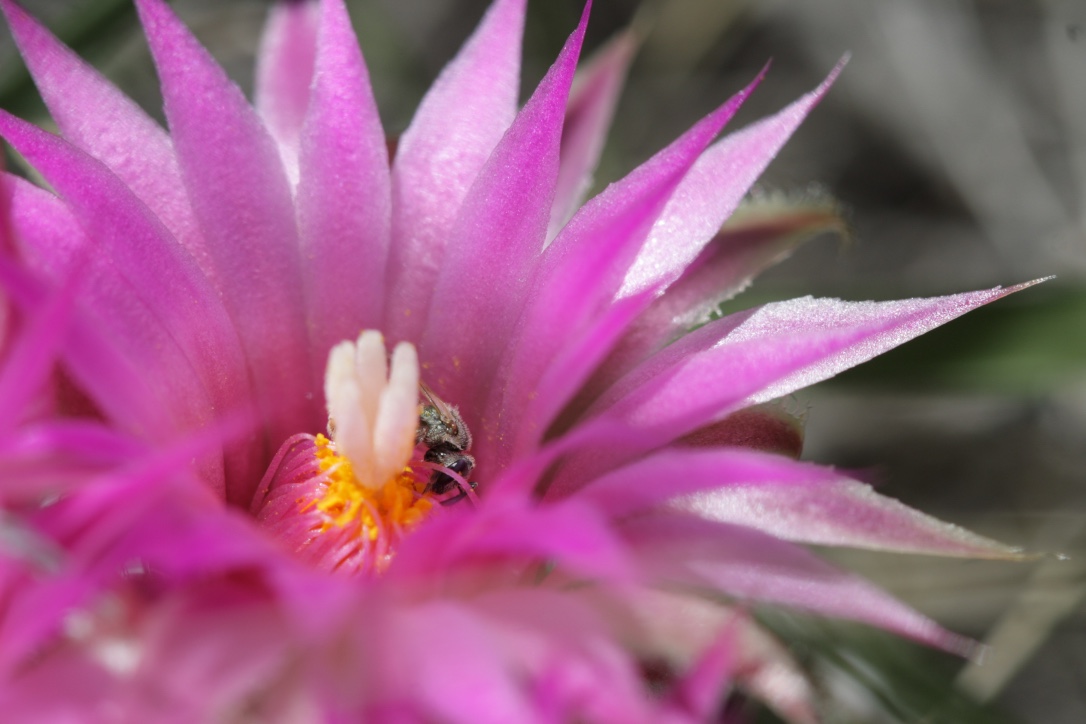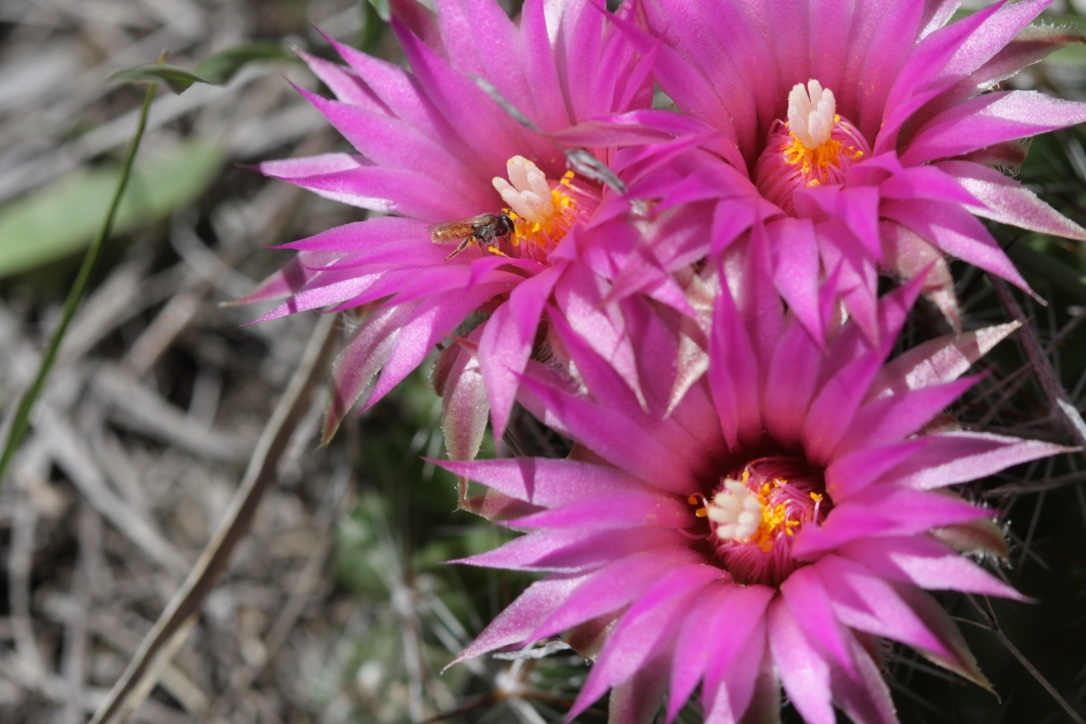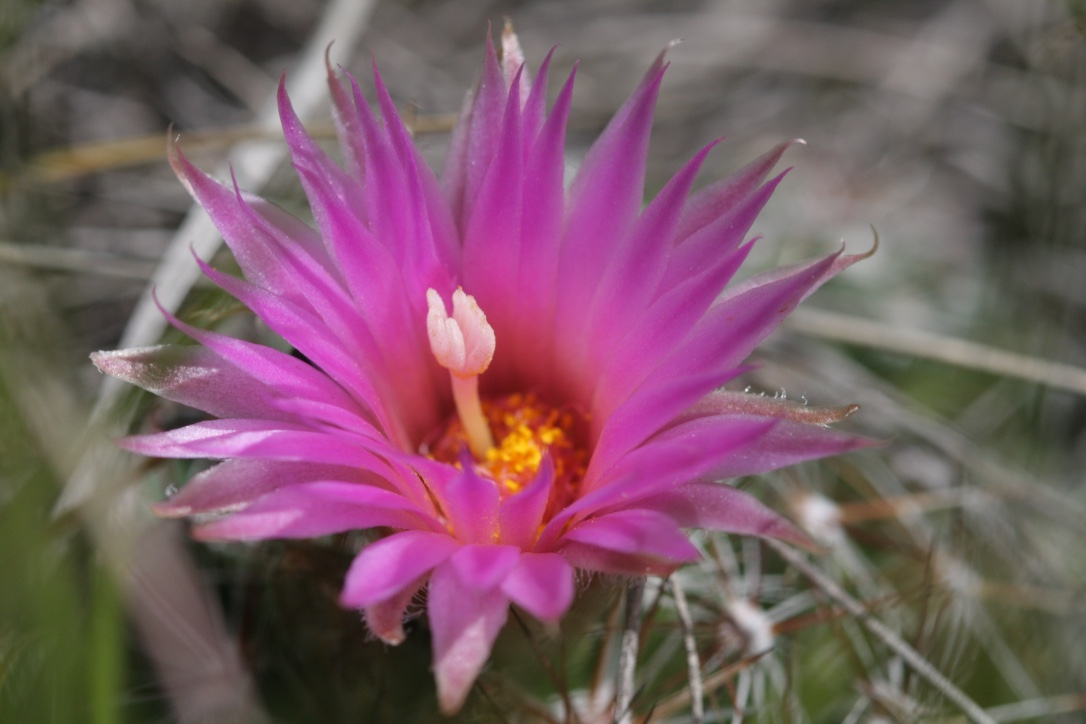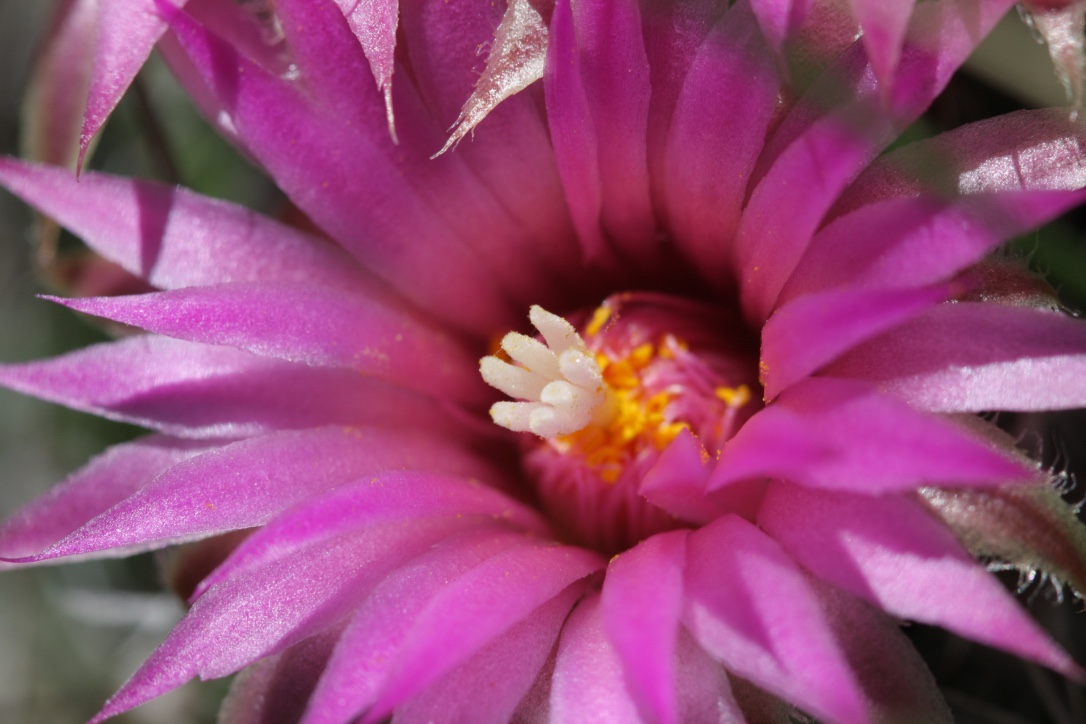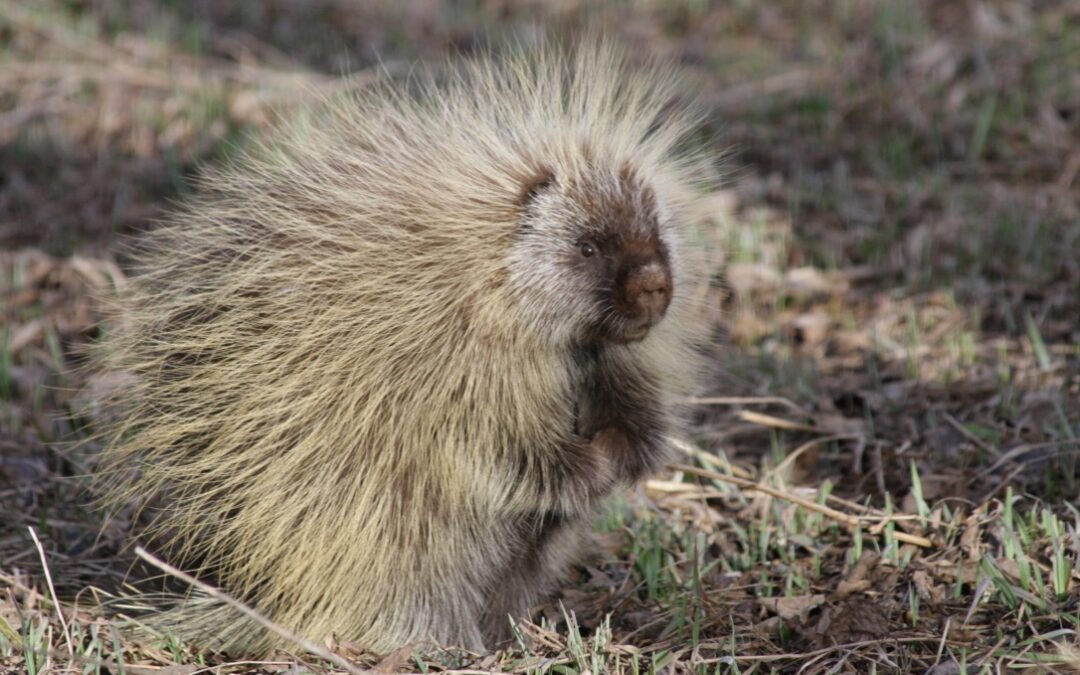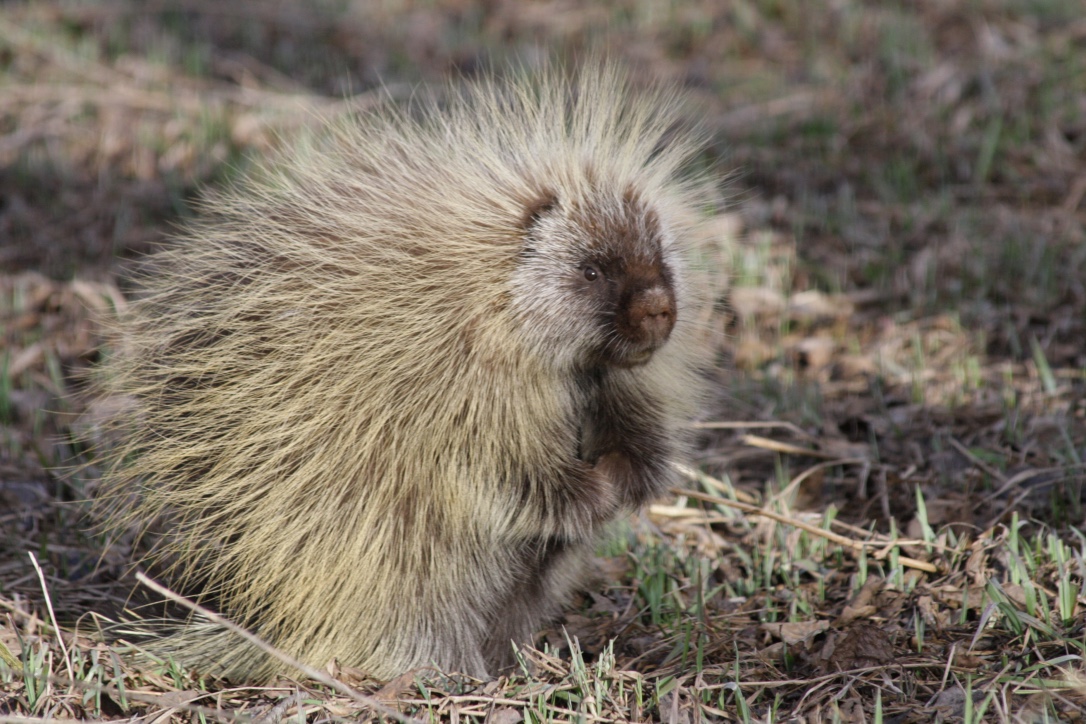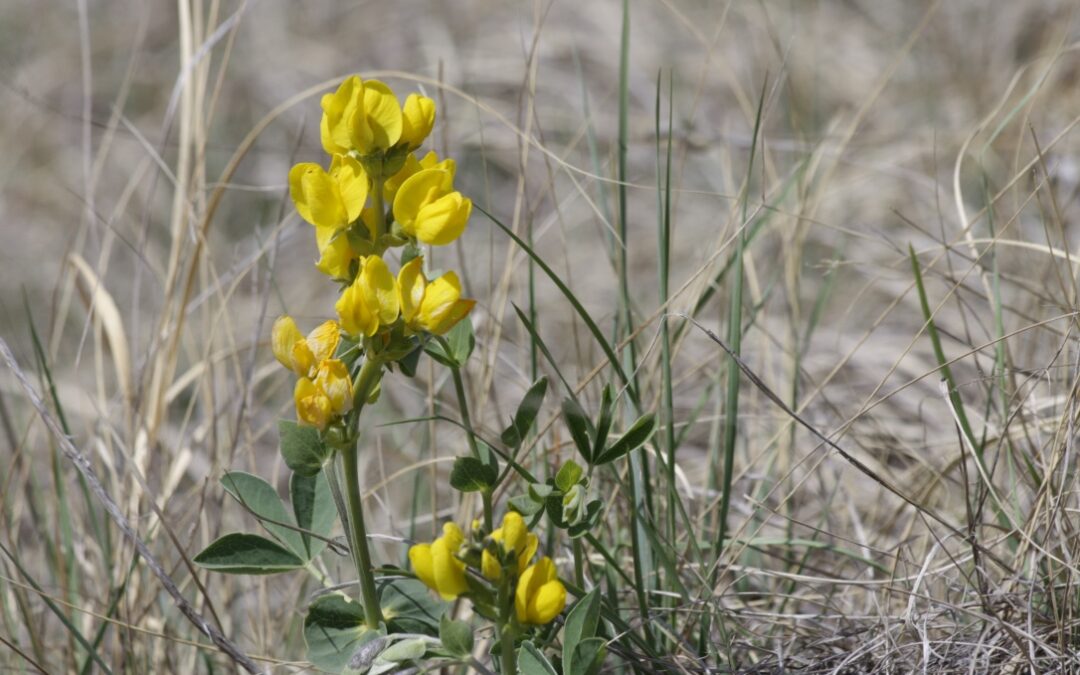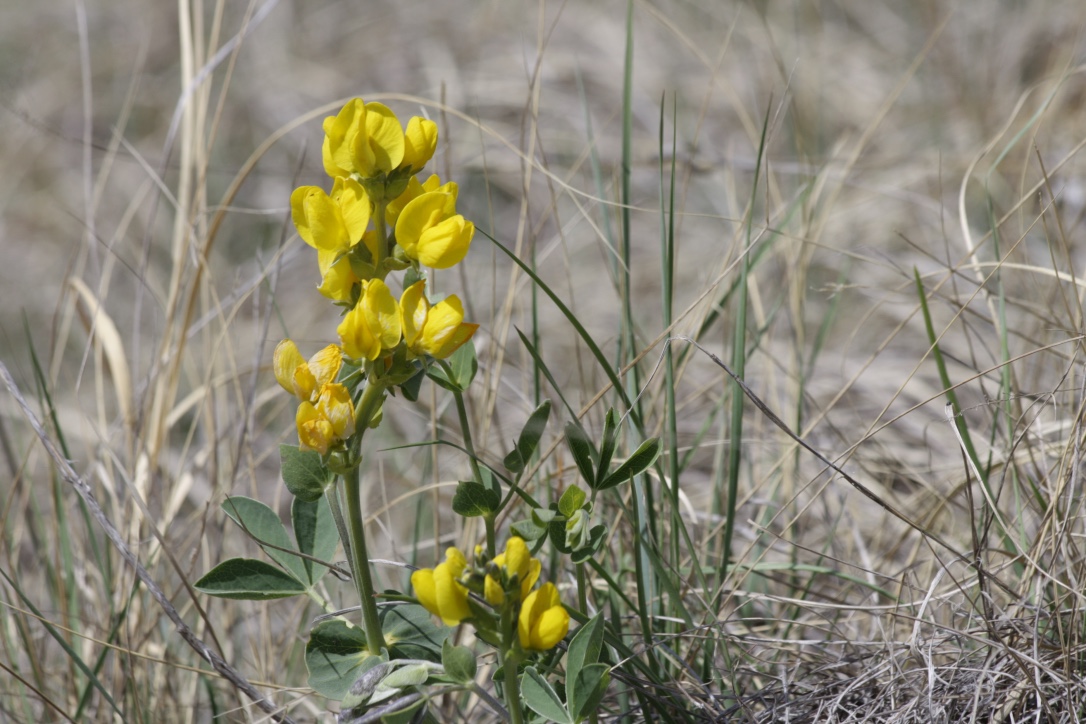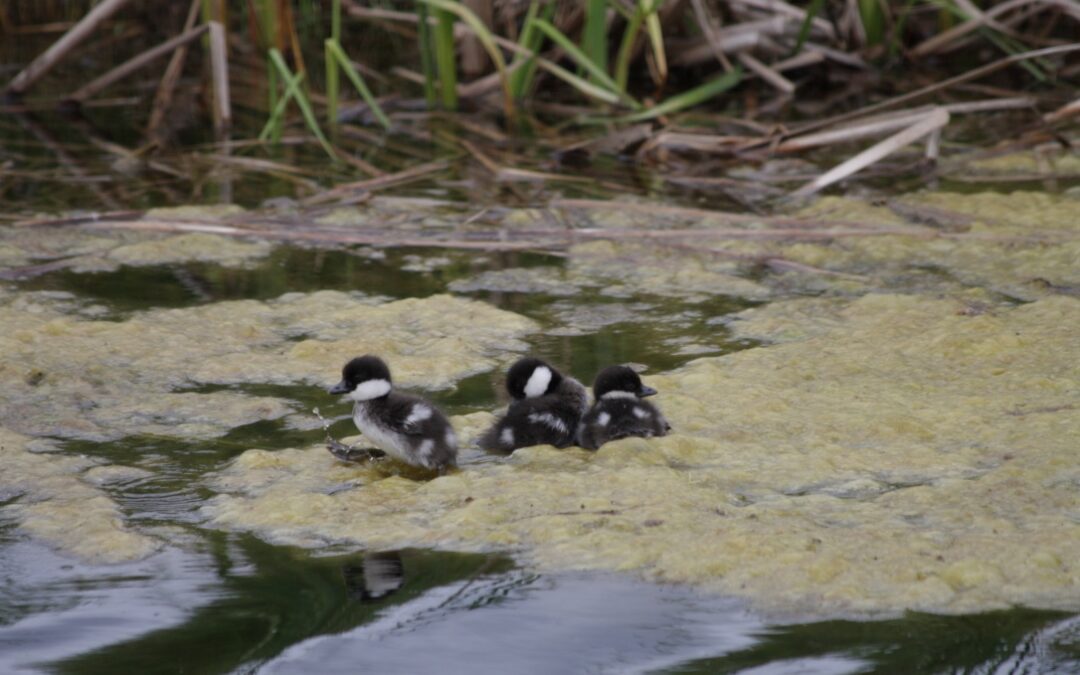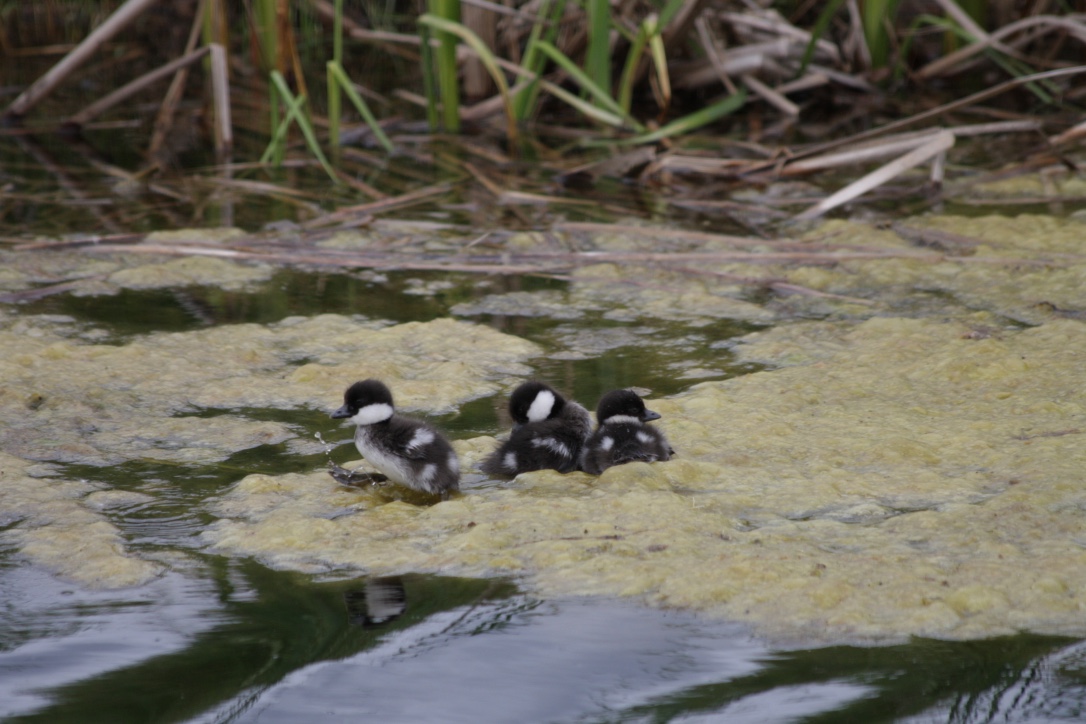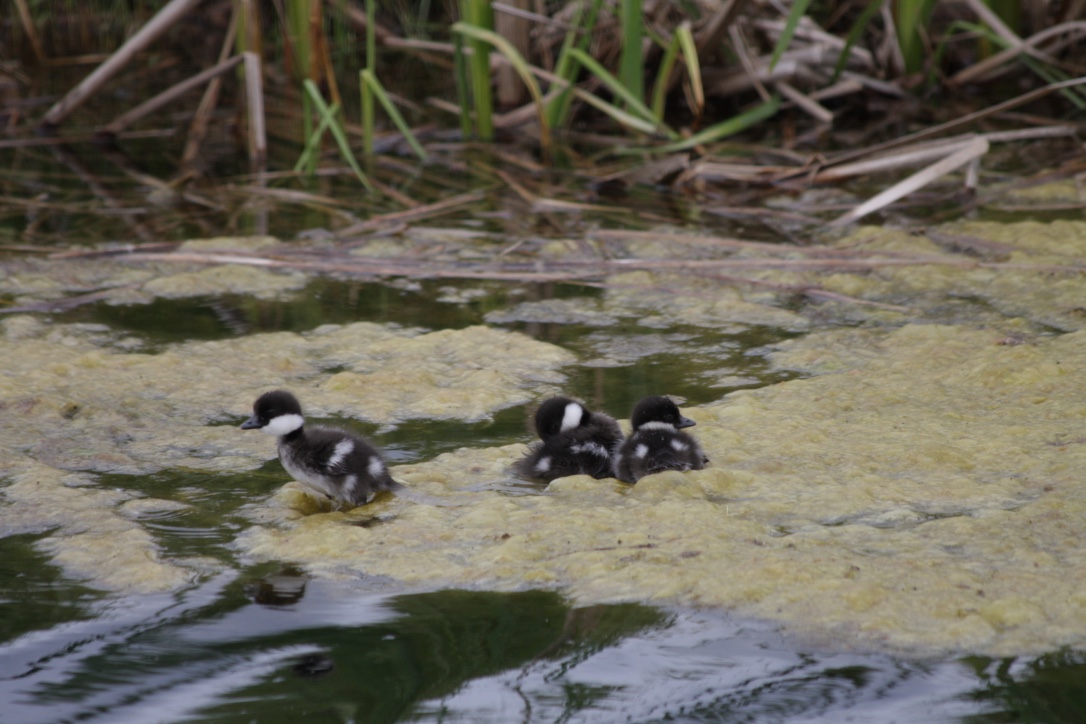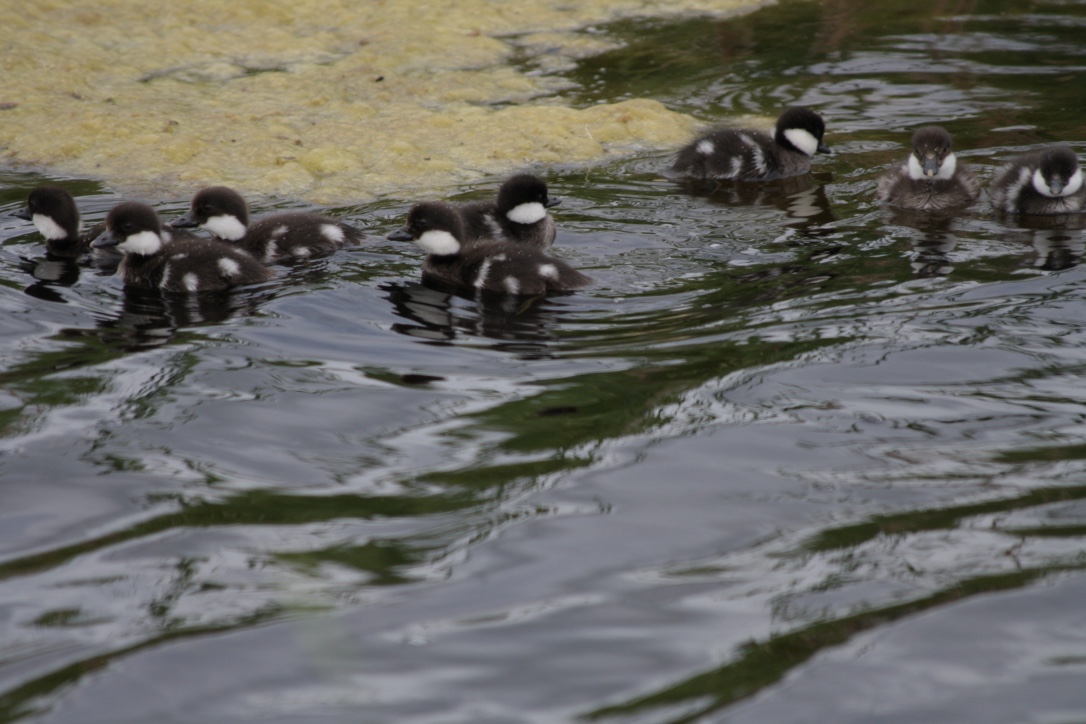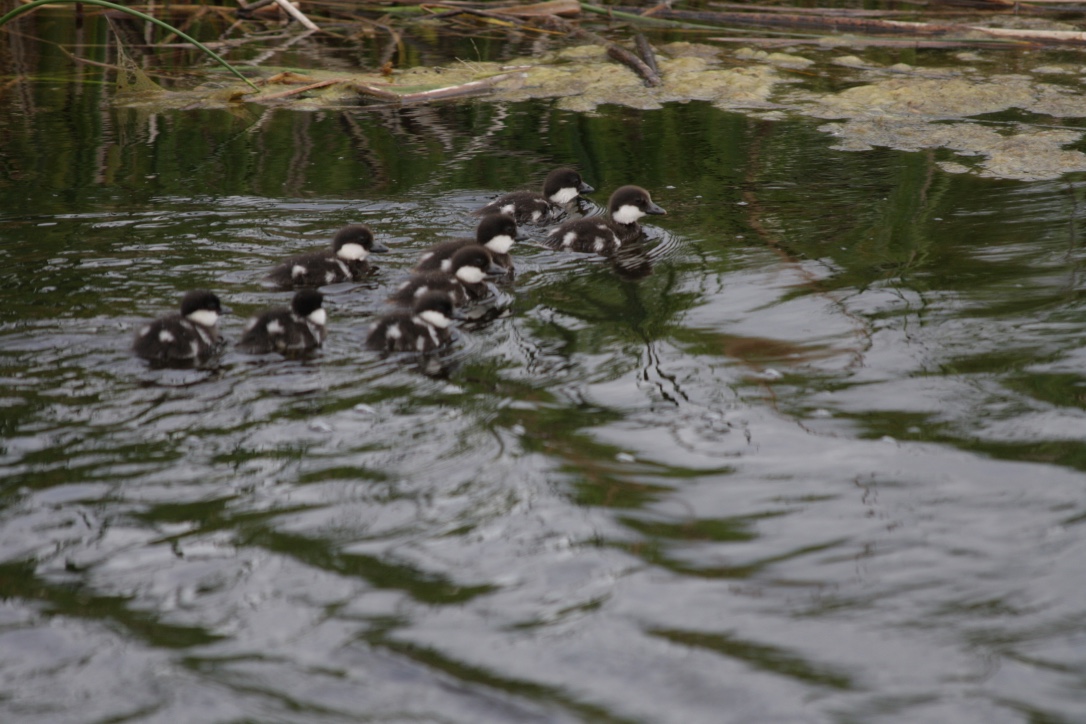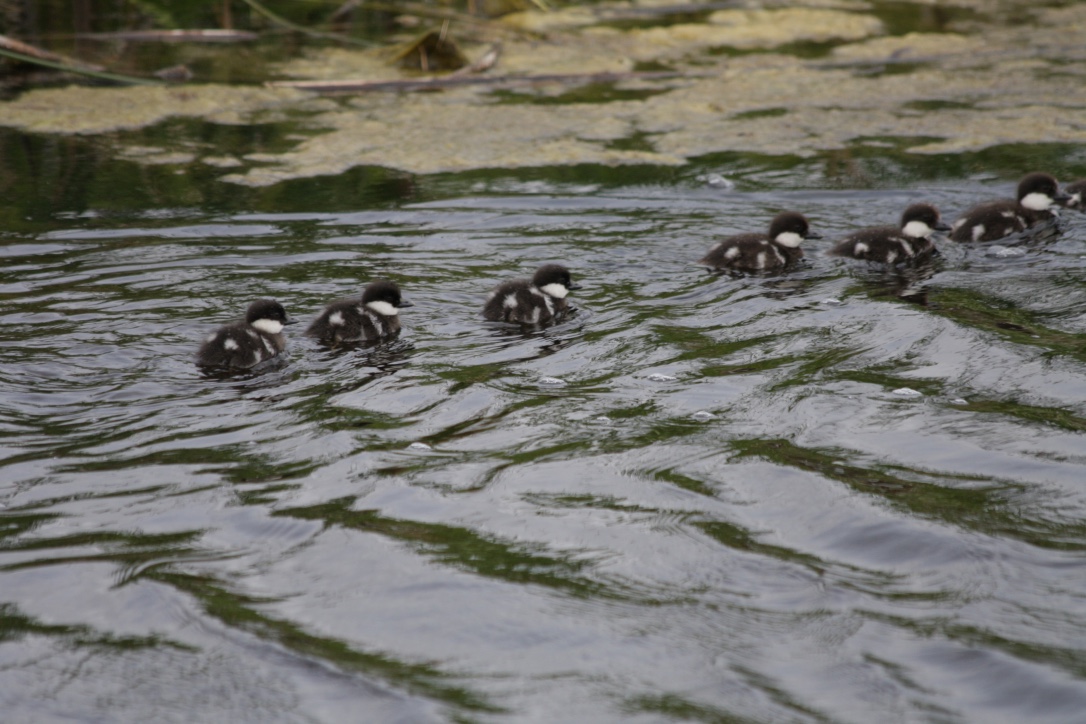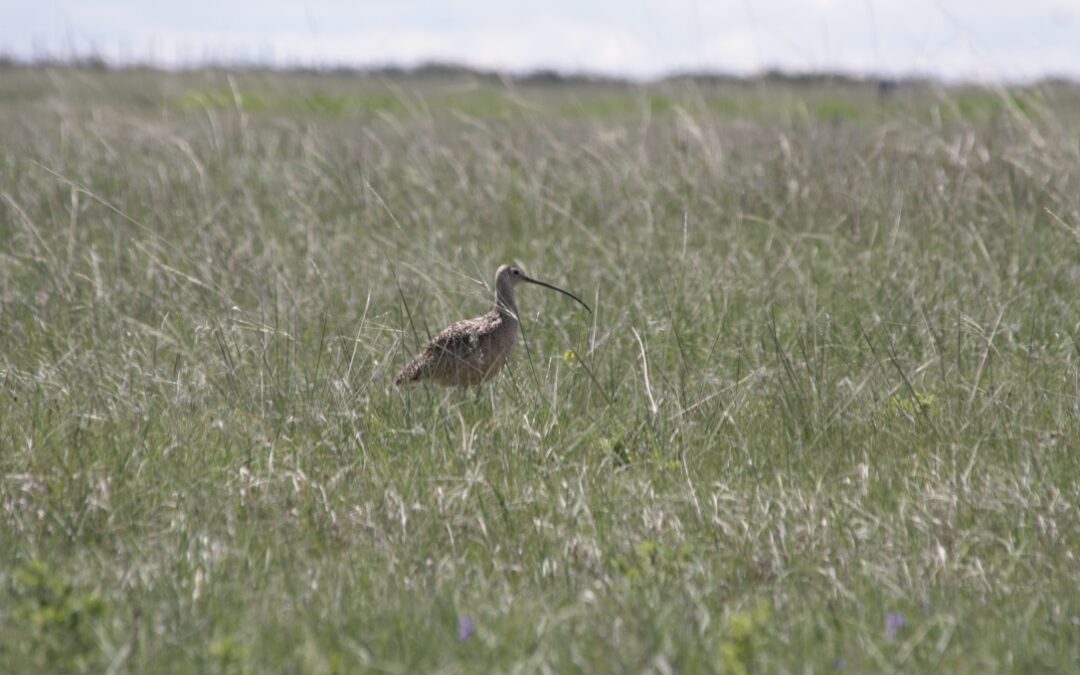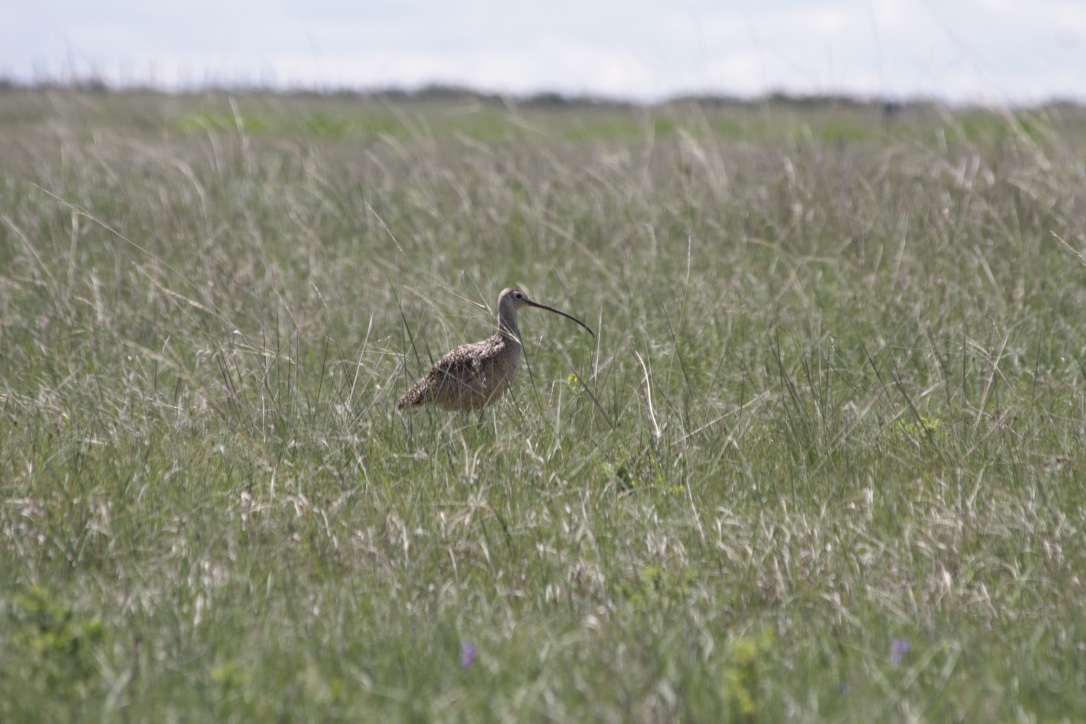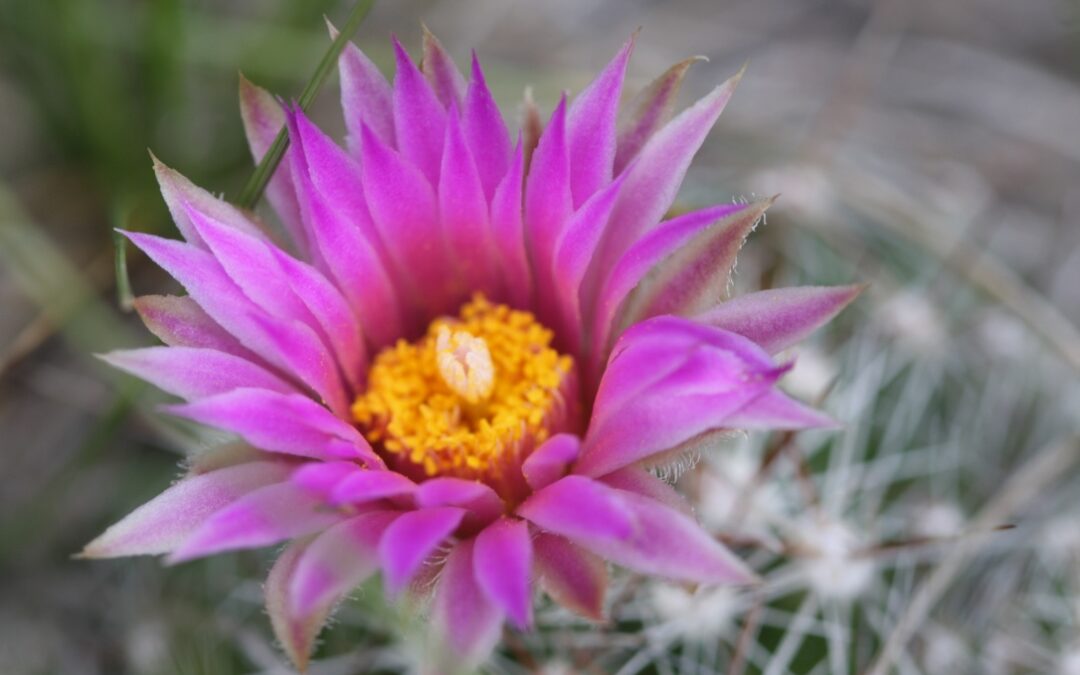
Pincushion Blooms
These flowers, from the Pincushion Cacti (Escobaria vivipara), found in the southwestern part of Alberta, only last for a day or two before they fade away. What’s even more exciting is that they always bloom a couple of days after a good rainstorm blew through the prairies. They aren’t big, the flowers are only about the size of your thumb, but talk about vibrantly pink!
Taken at the Mattheis Research Ranch (University of Alberta’s Rangeland Research Institute) near Brooks, AB, Canada on June 19, 2014, with my old Canon Rebel XS DSLR camera with a Canon EF 100 mm f/2.8 IS USM macro lens.

